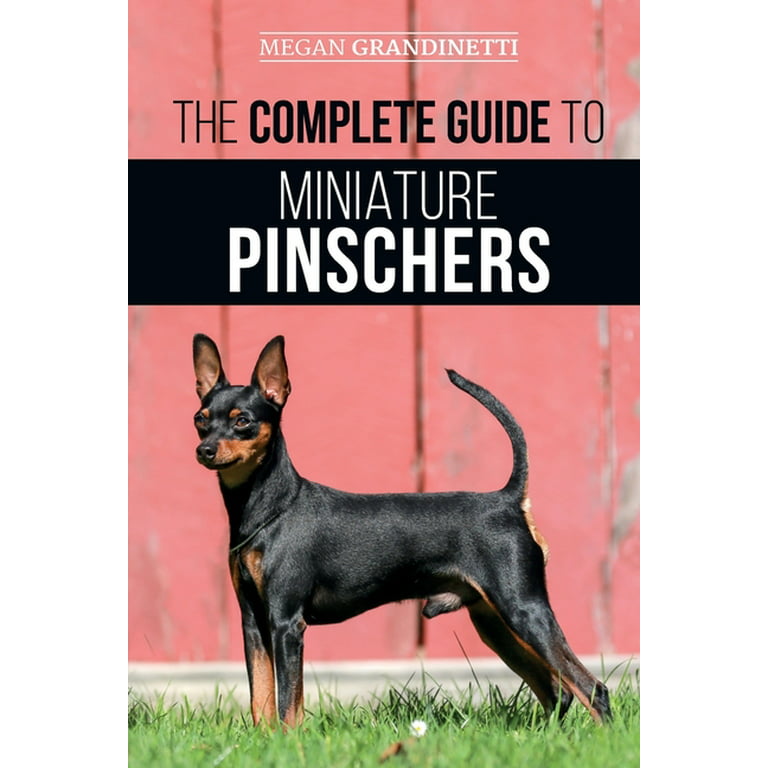The Miniature Pinscher, known for its spirited and fearless nature, traces back to early Germany for ratting purposes. Effective training and socialization are crucial for this breed, balanced with a diet tailored to their high energy needs.
The Miniature Pinscher, often mistaken for a diminutive Doberman, stands as a breed in its own right with a history steeped in German tradition. Initially bred to hunt vermin, the “Min Pin” presents itself with a king-like demeanor, showcasing confidence and poise that belie its small stature.
Their temperament is a vibrant blend of curiosity and spunk, which translates into a vivacious and bold companion. Owners should engage these pint-sized powerhouses with firm, consistent training to harness their intelligence and prevent the development of “small dog syndrome. ” As for feeding, a well-structured diet is essential to maintaining their robust health and supporting their boundless energy. The breed’s characteristically sleek coat and compact muscular build make the Min Pin a strikingly elegant canine, ideal for those who can handle a dog with plenty of personality packed into a small package.

Credit: www.amazon.com
The Origins And History Of The Miniature Pinscher
The Miniature Pinscher hails from Germany with roots tracing back several centuries. Often mistaken for a miniature Doberman, it is, in fact, not a downsized version of the Doberman Pinscher but a distinct breed of its own. The ancestry of the Miniature Pinscher likely includes a mix of the German Pinscher, the Dachshund, and the Italian Greyhound, among others.
| Historical Period | Role |
|---|---|
| 17th – 19th Century | Barnyard Ratter |
| Early 20th Century | Companion Dog |
As the breed’s roles shifted from vermin hunter to companion animal, its breed standards evolved too. Original breed standards established in Germany in 1895 emphasized physical traits suited for hunting such as a well-muscled body and fearless character. Over time, these standards have adapted to emphasize the Mini Pinscher’s unique individuality and suitability to modern lifestyles while maintaining the breed’s trademark high-spirited and energetic demeanor.
Understanding The Miniature Pinscher Temperament And Behavior
The Miniature Pinscher, often known as the “King of Toys,” exhibits a bold and confident temperament. This breed’s energetic and assertive personality requires a patient and firm owner. With consistent training, Min Pins can be intelligent and loyal companions. Their inquisitive nature keeps them alert and curious about their surroundings.
Regarding social behavior, Miniature Pinschers are generally friendly with humans but can be reserved with strangers. Proper socialization from a young age is crucial as it molds their interactions with other animals and people. These dogs may show dominance towards other pets if not socialized correctly.
Common behavioral traits
Training Your Miniature Pinscher
Training your Miniature Pinscher begins with understanding the breed’s nature. These spirited dogs respond well to consistent and patient training. Start puppy training at a young age, focusing on basic commands such as sit, stay, and come. It’s crucial to establish yourself as the pack leader to harness their strong-willed temperament.
For behavioral challenges, positive reinforcement techniques are key. Reward-based training helps address issues like excessive barking or digging. Remember to always use positive feedback and treats to encourage desired behaviors. Never resort to harsh discipline, as it can damage your bond with your dog and potentially worsen behavioral problems.
Moving onto advanced training, Miniature Pinschers can excel in agility and obedience with the right training methods. These high-energy dogs enjoy the challenge and stimulation that agility courses provide. Aim for short, engaging sessions to keep their attention. Obedience training strengthens your control and enhances your dog’s focus and responsiveness.

Credit: www.walmart.com
Feeding Your Miniature Pinscher
Nutritional Requirements: A balanced diet is crucial for your Miniature Pinscher’s health. Essential nutrients include high-quality proteins for muscle development and maintenance, fats for energy, and carbohydrates for fuel. Vitamins and minerals should be included to support overall health, with careful attention to calcium and phosphorus ratios for bone strength.
Feeding Schedules and Portion Sizes: Consistency with feeding schedules supports digestive health and ensures your pet’s proper growth. Determine the right portion sizes based on your Miniature Pinscher’s age, weight, and activity level, typically ranging from 1/4 to 1 cup of food per day, divided into two meals.
Dealing with Dietary Issues and Food Sensitivities: Each Miniature Pinscher is unique, with some dogs prone to food sensitivities or allergies. Identifying and eliminating problem ingredients is crucial. Offer a diet that is free from common allergens, such as corn or soy, and consider a limited ingredient diet for sensitive dogs.

Credit: www.walmart.com
Frequently Asked Questions For Miniature Pinscher History, Temperament And Behavior, Training, Feeding
What Is The Origin Of Miniature Pinschers?
Miniature Pinschers, often called Min Pins, originated in Germany several centuries ago. They were primarily used for hunting vermin. Despite their similar looks, Min Pins are not miniature Doberman Pinschers but are their own distinct breed.
How Do Miniature Pinschers Typically Behave?
Miniature Pinschers are energetic, assertive, and confident dogs. They’re known for their spirited presence and self-assured attitude, often acting fearless despite their small size. This breed can be very loyal and protective of its owners.
What Training Techniques Work Best For Min Pins?
Positive reinforcement and consistency are key in training Miniature Pinschers. Due to their intelligence and independent nature, Min Pins respond well to reward-based training methods. Short, engaging sessions help maintain their attention and interest.
Can Miniature Pinschers Adapt To Apartment Living?
Yes, Miniature Pinschers can adapt well to apartment living due to their small size. However, they are active dogs that require daily exercise. Adequate playtime and walks are essential to keep them happy and healthy in a smaller living space.
Conclusion
Embracing the Miniature Pinscher’s rich history enhances our appreciation for their distinctive temperament and zest for life. Effective training and proper feeding formulate the cornerstone of a harmonious Min Pin partnership. Delve into this breed’s world, and discover a loyal companion eager for adventure and affection.
